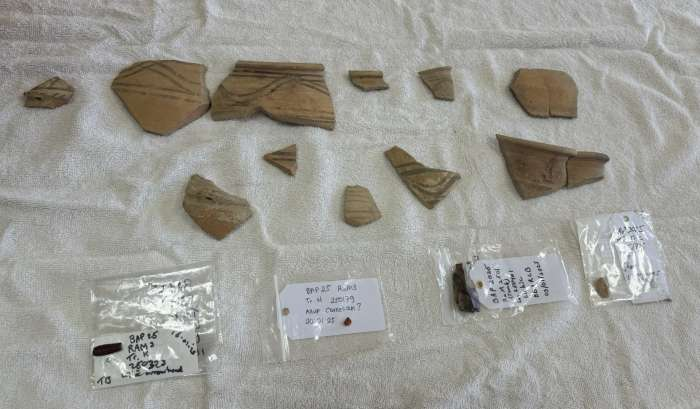Significant Archaeological Find in Al Dhahirah Governorate
Archaeologists have uncovered a remarkable Bronze Age settlement at Rakha al-Madra, near the Bat ruins in Oman’s Al Dhahirah Governorate. This discovery, made through joint excavations by the Ministry of Heritage and Tourism and an American archaeological team, has revealed ancient graves dating between 3200 and 2700 BCE, along with four structures from the same era.
Insights from Excavation Efforts
Dr. Jennifer Suereda, head of the University of Pennsylvania’s archaeological mission, stated that this season’s work focused on Rakha al-Madra, a circular clay site bordered by low hills. The area retains water for days after rainfall or wadi floods, which may have influenced its historical significance.
A key objective of this excavation was to study the largest Bronze Age structure at the site and determine its function—whether it served as a residence or a community hub. The findings included ovens and walls, suggesting prolonged use extending into the early Islamic period. Among the discovered artifacts were a Neolithic flint arrowhead, a carnelian amulet and pottery shard from the Umm Al Nar period, a metal tool head from the early Islamic period, an imported ceramic jar from the Indus Valley, and another piece of carnelian.
Additionally, researchers collected soil samples containing microscopic plant remains to gain deeper insights into the environment and daily activities of the settlement’s inhabitants.
Continued Commitment to Archaeological Research
Suleiman bin Hamoud Al-Jabri, head of the technical section for archaeological sites in Bat, Al-Khutm, and Al-Ayn, highlighted the Ministry of Heritage and Tourism’s longstanding efforts to attract expert archaeological teams from international universities. Since the 1970s, missions from Denmark, Germany, Japan, France, and Italy have contributed to research at the Bat site. The current partnership between the University of Pennsylvania and Leiden University has been ongoing since 2007, focusing on the analysis of towers, tombs, and buildings, as well as examining soil, water sources, and rainfall patterns in the Bat region and nearby sites, including Rakha al-Madra, which is about seven kilometers from Bat.
A UNESCO World Heritage Site
The Bat archaeological site holds UNESCO World Heritage status, underscoring its historical importance. Ongoing excavations and studies continue to enrich our understanding of human civilization, ancient technologies, cultural traditions, and past ways of life, offering invaluable insights into early societies that thrived in the region.







